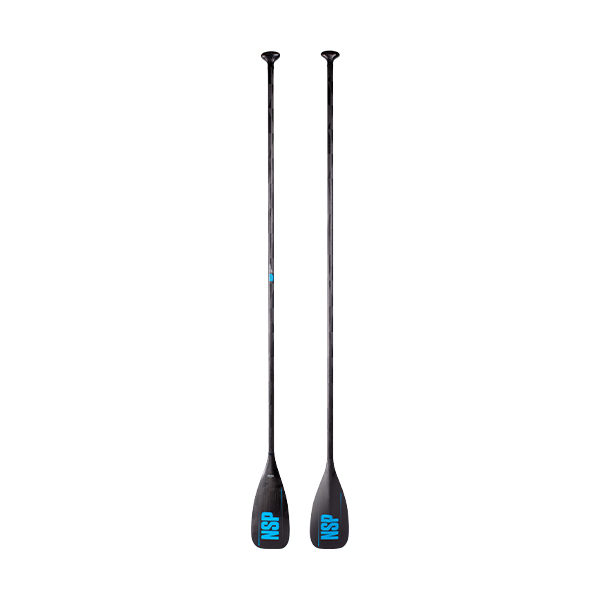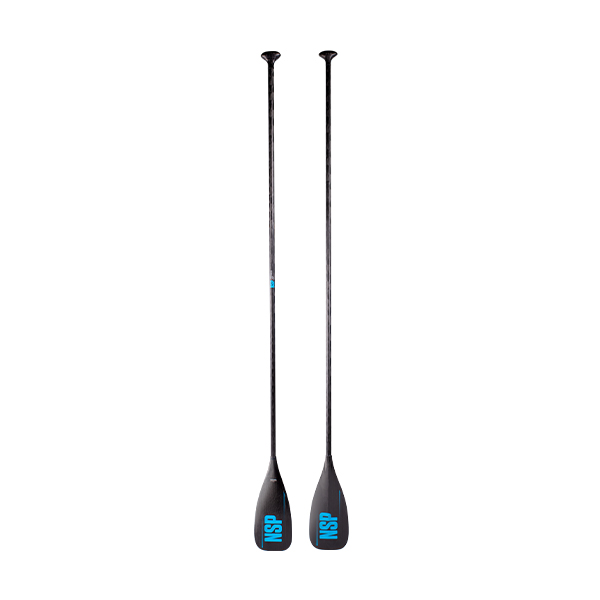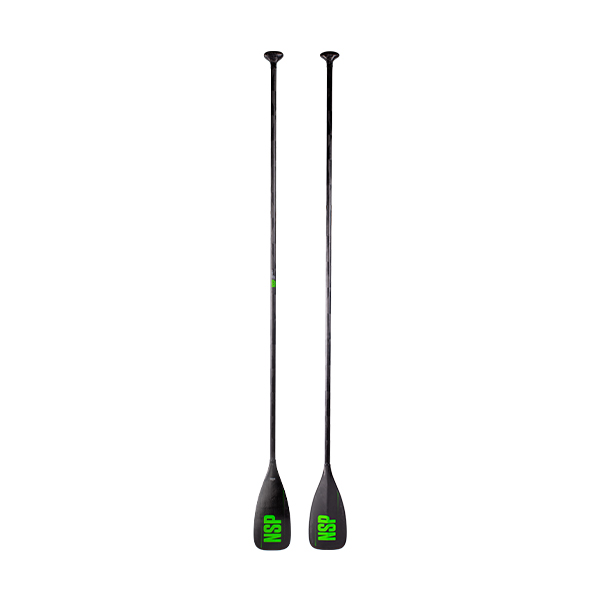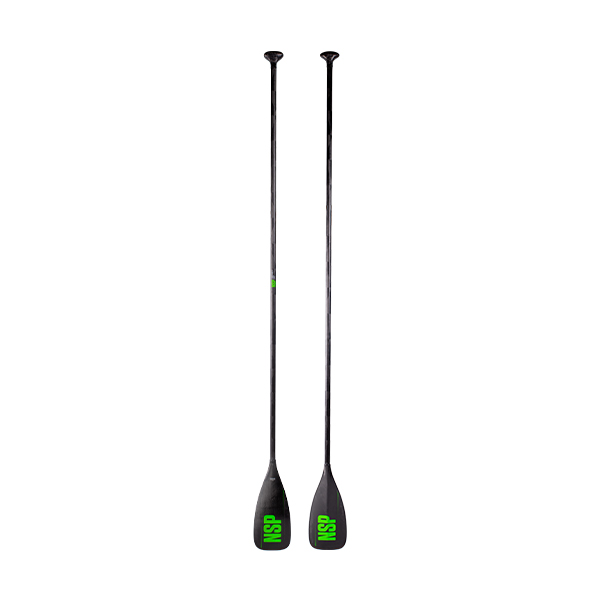How to cut a carbon paddle
This tutorial is written for paddlers looking for detailed info on how to cut a carbon paddle. Riders sawing through their own paddle for the first time will appreciate this article especially.
We understand your hesitancy at putting a hacksaw to that brand-new carbon shaft, and glueing it up without some proper guidelines. Which is why we wrote “how-to cut a carbon paddle”, allowing you to perform this task yourself. Jonesy made sure to cover every single step in detail and documented the process with a video as well.
If you are looking for a specific step in the process of how to cut a carbon paddle, simply use the table of contents to skip to a particular segment:
Requirements for how to cut a carbon paddle:
– Uncut paddle shaft
– Hacksaw
– Sandpaper
– Masking tape
– Black plumber’s tape
– Hot glue
– Hot air gun/glue pistol
– Hoist/table as a working area
Epoxy vs. hot glue
Epoxy is easier to work with as it doesn’t require a hot air gun, but not everyone likes to work with it. A “pro” will know exactly what length they want their paddles to be. They also have familiarized themselves with the ins and outs of making sure the handle is at a perfect angle, negating the need to possibly redo the whole process.
So with that type of confidence, epoxy as a bonding agent is a great option as it is easy to use, hardens up fast and once it settles, it will last forever. Mere mortals like ourselves do tend to make mistakes so using hot glue allows you to make additional adjustments by simply heating up the glue and pulling the handle apart from the shaft for an additional adjustment to just the handle or maybe the length of the shaft.
Which hot glue?
As a rule of thumb, use the one you have access to. Most people have a hot glue gun laying around, along with some sticks the gun came with. These are perfect for what you are about to do.
In the video above, Jonesy uses some industrial-grade hot glue pellets that require warming up, for which he uses a heat gun or hairdryer. Bottom line is all kinds of hot glue work extremely well. Plus, heating up hot glue allows you to dissolve the bond again, making it perfect for this type of application.
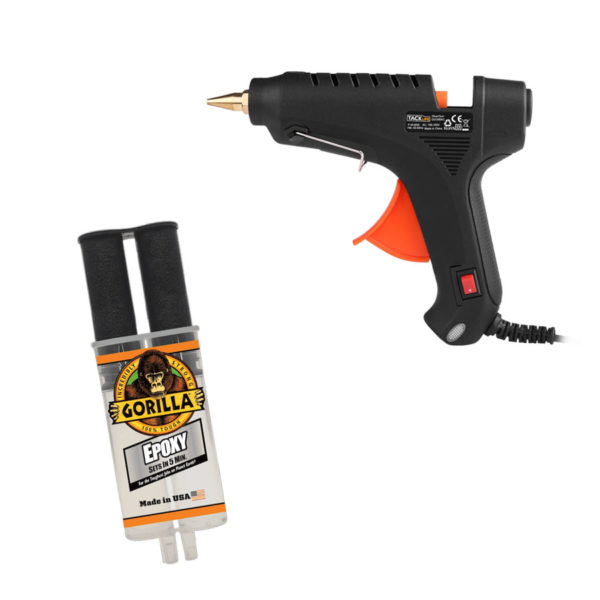
Working area
Make sure you have a flat surface to work on. When you get to the sawing part of the procedure, little force is needed so never mind a vice.But being able to hold the shaft steadily is very helpful. If you have a sawing guide laying around somewhere, do use it as it will make sure your cut is that much straighter.
Measuring correctly and how to cut a carbon paddle
If you’re into flatwater or raceboards, you are going to want a longer paddle than you would need for surf SUP and the smaller, sinkier boards that come with that territory. Important! If this is your first time cutting a paddle, it is best to cut the paddle shaft a little longer instead of cutting off too much.
World-famous paddler Travis Grant (Molokai, Carolina Cup, King of the Harbor, etc) worked on a great video for racing and paddle length, so go check that out as well! We have used both 6 to 8 inches and 3 to 4 inches, but by all means, experiment and find what’s comfortable to you.
In the video at the start of this article, Jonesy applies the basic rule of thumb that works for recreational racers – the “shake above your head” method. Paddlers in the surf should stick to head high as they adopt a more hunched stance for better balance and power transfers to the edge.
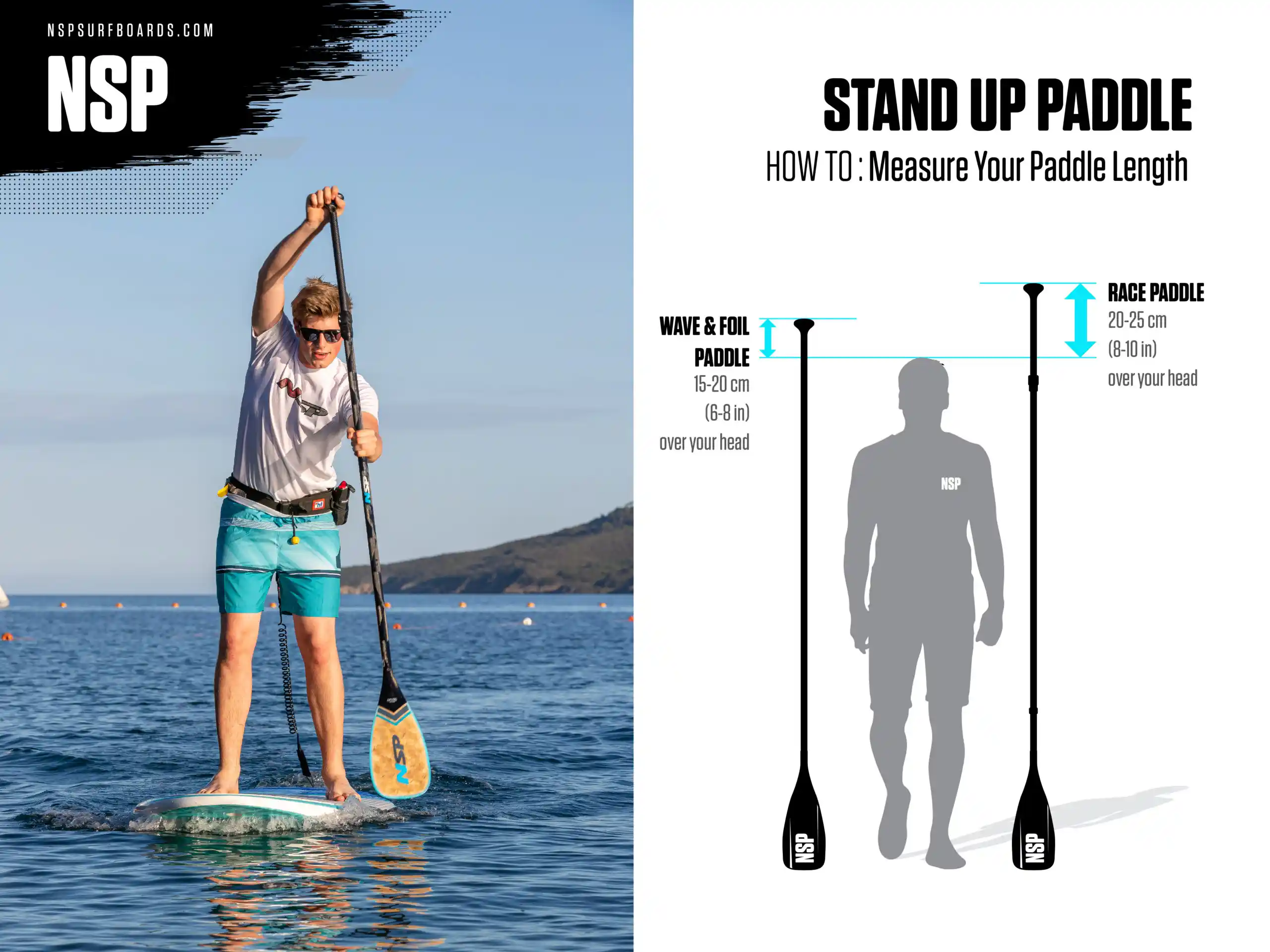
[updated] Paddle length for foiling
Through our Instagram channel especially, we get a lot of inquiries about the correct paddle length for foiling. In our experience, your standard SUP surf length works best for foiling. Although intuitively you’d expect a longer paddle to be ideal for foiling, riders report a decrease in efficiency for longer paddles, as flex comes into play. Being able to “flick” your paddle around is important as well, and the longer your paddle is, the more effort this requires.
Plus, naturally you will be assuming a hunched stance when foiling to lower your COG (center of gravity). So this lowers the required length of your foil paddle as well. A longer paddle also has the potential to clip your foil wing, which comes with a whole new list of problems.
Most foilers will do significantly more pumping than paddling, and a (big bladed) paddle is at its most useful point when you are getting going or when you are paddling through white water.
Prepping & sawing
In the video, Jonesy uses simple masking tape. This is an excellent method for not only marking the spot you want to cut, but also to make sure your edge doesn’t splinter more than necessary.
Bonus trick: Jonesy uses the excess of the shaft to practice his cutting technique, and if you are new to sawing through carbon fibers, this is a great way to familiarize yourself with it and make sure your cutting is consistent and straight.
Cleaning up the edge
Simply sand down the edge so you get rid of any runners or loose splinters as you really don’t want any of those in your hand during a long-distance paddle.
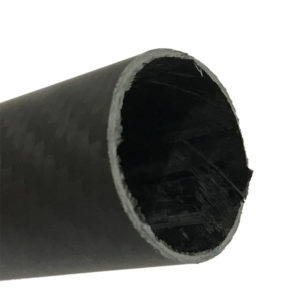
Bonus trick
Jonesy uses the excess of the shaft to practice his cutting technique, and if you are new to sawing through carbon fibers, this is a great way to familiarize yourself with it and make sure your cutting is consistent and straight.
Sawing is as straightforward as it gets, but applying the right amount of force at the correct angle and consistently is a good feeling to familiarize yourself with, especially when you are cutting your first premium carbon fiber paddle today!
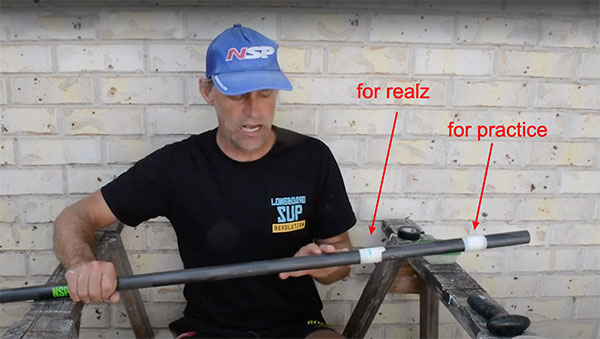
Glue for the handle
The biggest advantage of hot glue is that you can simply remove the handle again by heating up the glue for some additional adjustment or tweaking. So that’s why we will use hot glue. Make sure you get glue all around the plug of the handle so it settles really well. More importantly, make sure the handle is perfectly square as you will be able to tell if it is even a millimetre off once you start covering some distance.
Applying the electrical tape
As long as the handle and shaft are still hot, applying some electrical tape on the seam cleans up the look and keeps out dirt. What’s more, the heat of the carbon will help the tape shrink a little, almost becoming like shrink wrap.
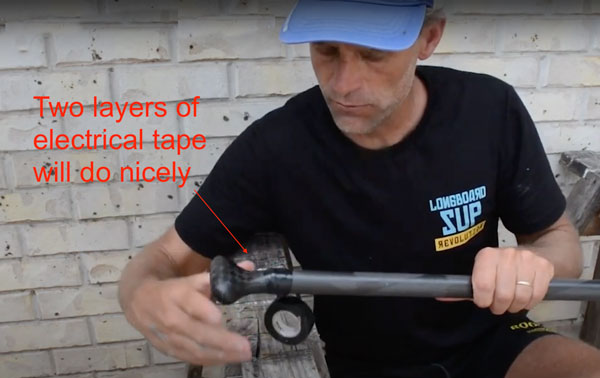
Your three big take-aways from this “How to cut a carbon paddle”-article
1) Better to leave the shaft too long than too short, as there’s no going back after that
2) Make sure the handle is positioned correctly (beginner’s mistake is to have it face the wrong way)
3) Make sure the blade is positioned correctly (beginner’s mistake is to have it face the wrong way)


